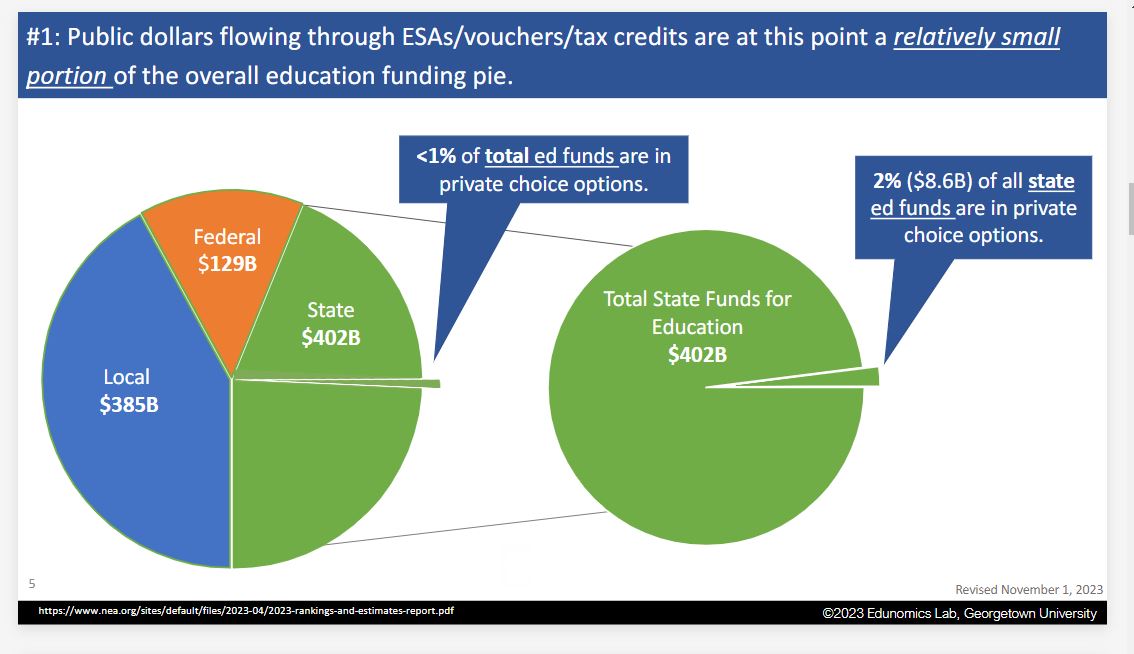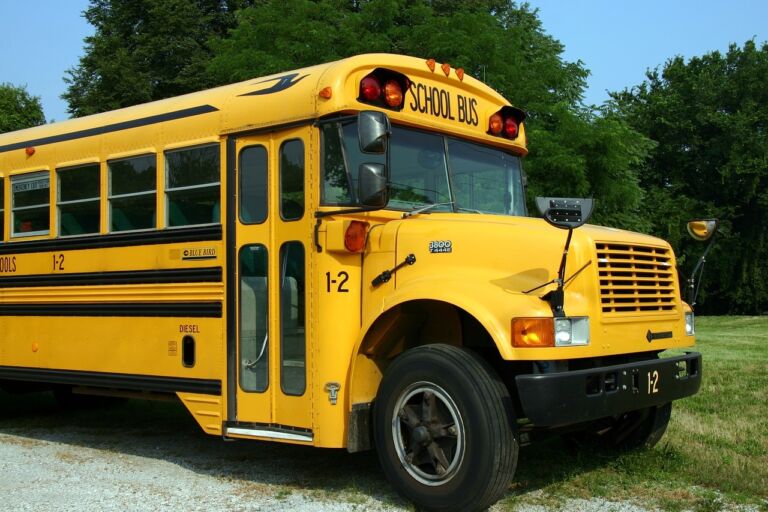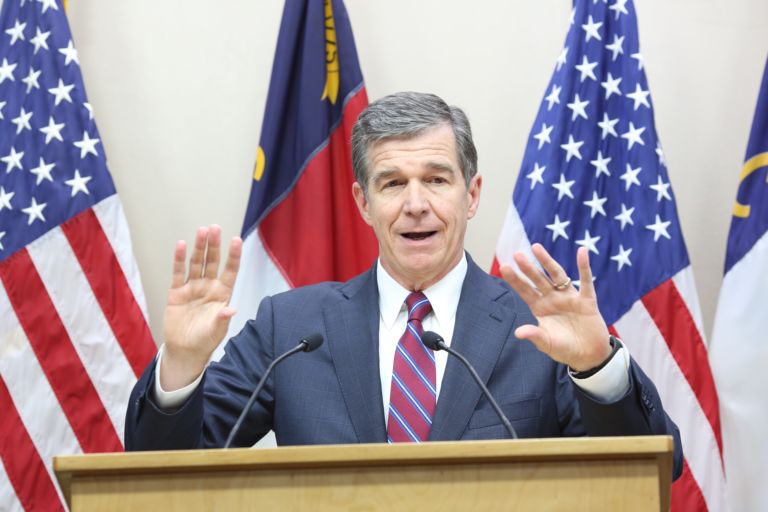That’s the question Marguerite Roza of Georgetown University’s Edunomics Lab sought to answer in a recent webinar on the topic. Roza does a real-time financial analysis of public dollars flowing into state private school choice options like ESAs, vouchers or tax credits. What did she find?
- Public dollars flowing through ESA/vouchers/tax credit programs are a small percentage of overall education funding.

- ESAs have the largest financial impact and are the fast growing program by type.
- Financial effects vary substantially state by state.
- Originally some programs were started only for students with disabilities, but today the financial effects of those are much smaller
- Less than 1/3 of funding in private options is income restricted.
- Financial impact on districts varies and can depend on whether the state’s growing or shrinking.
- Forecasting /estimating participation and cost of these programs is tricky.
So what does all this mean for school choice and public schools in North Carolina? Roza found that in 2023-24 North Carolina’s ESA program ($48,943,166) and voucher program ($176,540,00) cost $225,483,166 to operate (North Carolina does not offer a school choice tax credit program). The K-12 education budget for 2023-24 is $11,564,559, 926. As such private school choice programs account for approximately only 1.9 percent of the total K-12 budget.
As enrollment in school choice programs grow, the discussion over the impacts of school choice on public school budgets will likely continue. Roza’s financial analysis is certainly not the last word on the impact of school choice on public school budgets. More complex analyses are needed. Nevertheless, her findings provide a good starting point for objectively assessing the impact of school choice on public schools in North Carolina and elsewhere.


